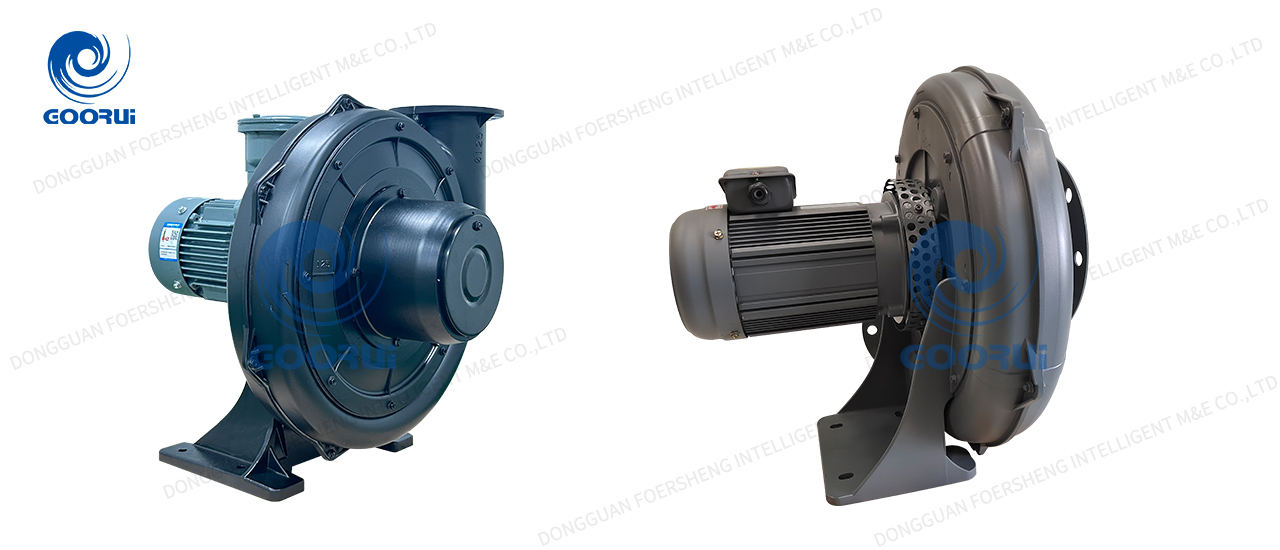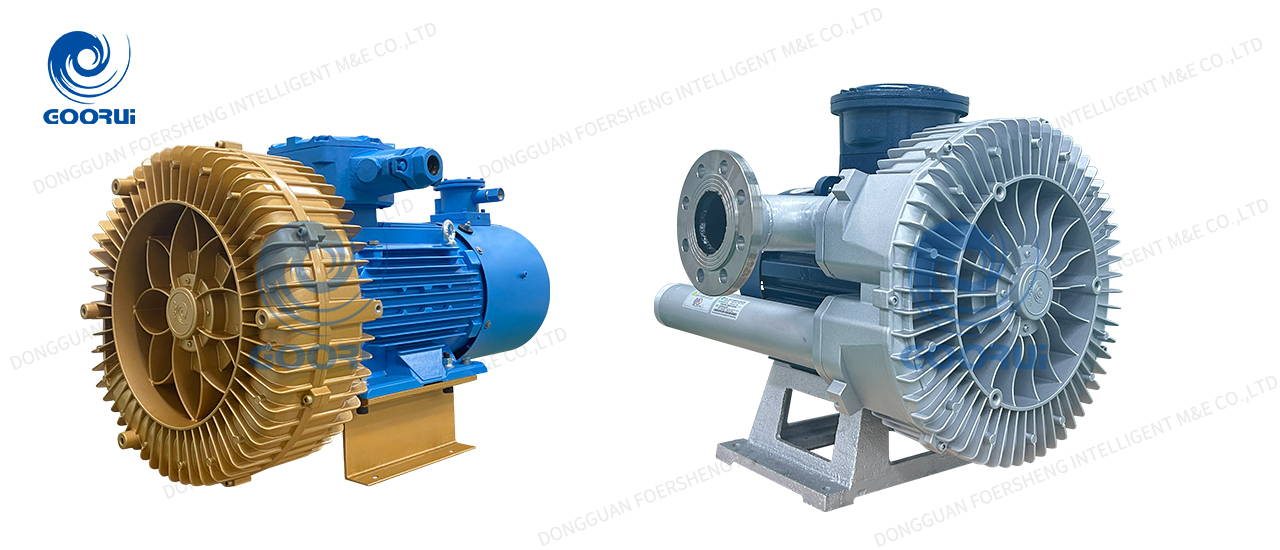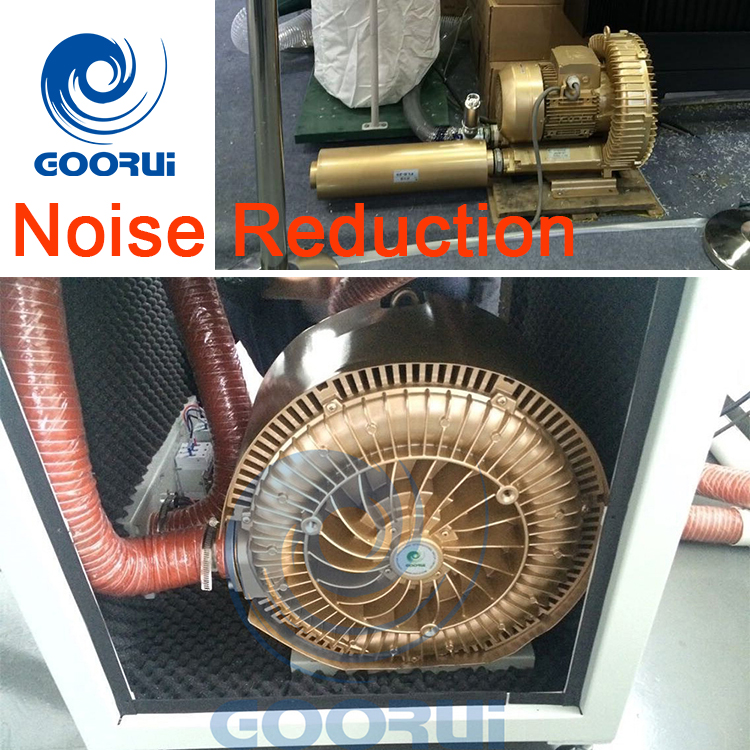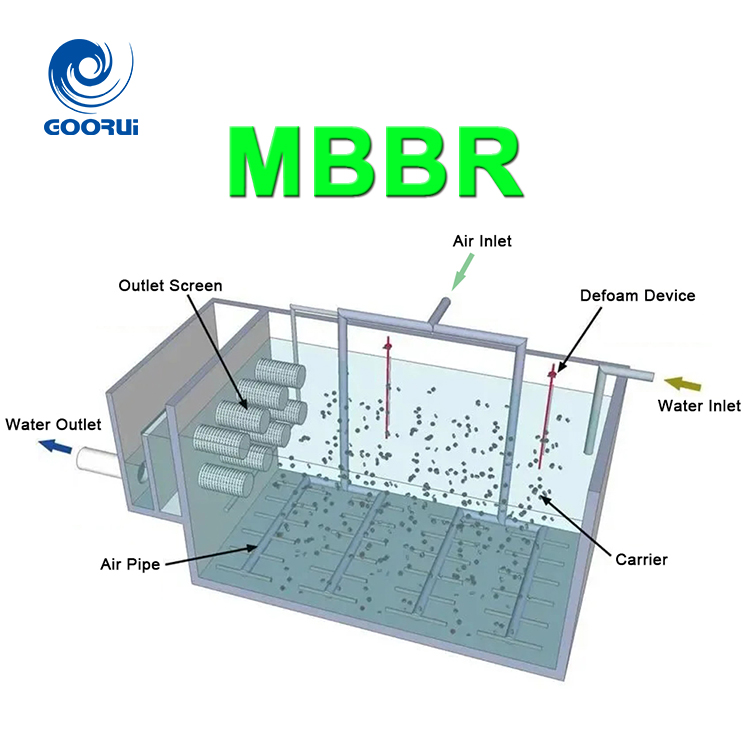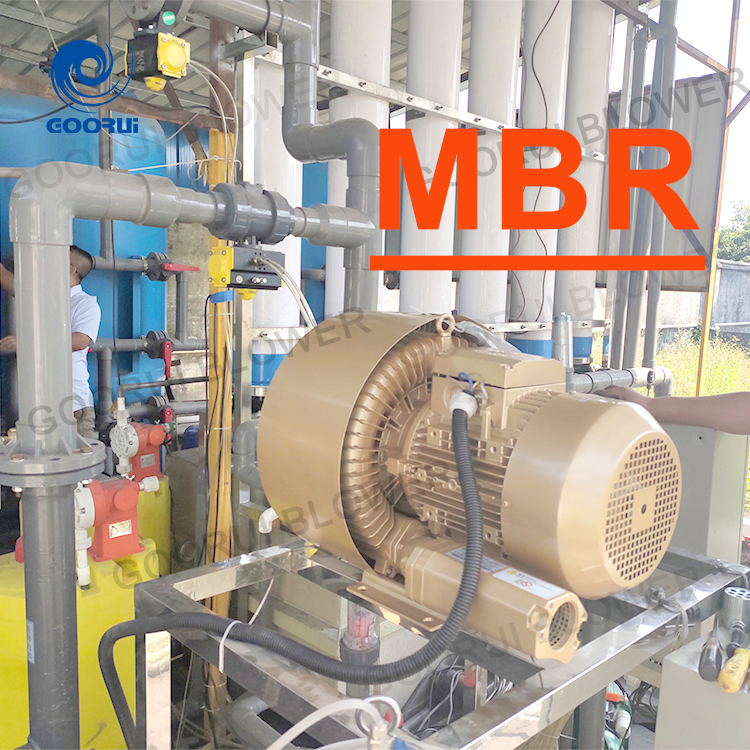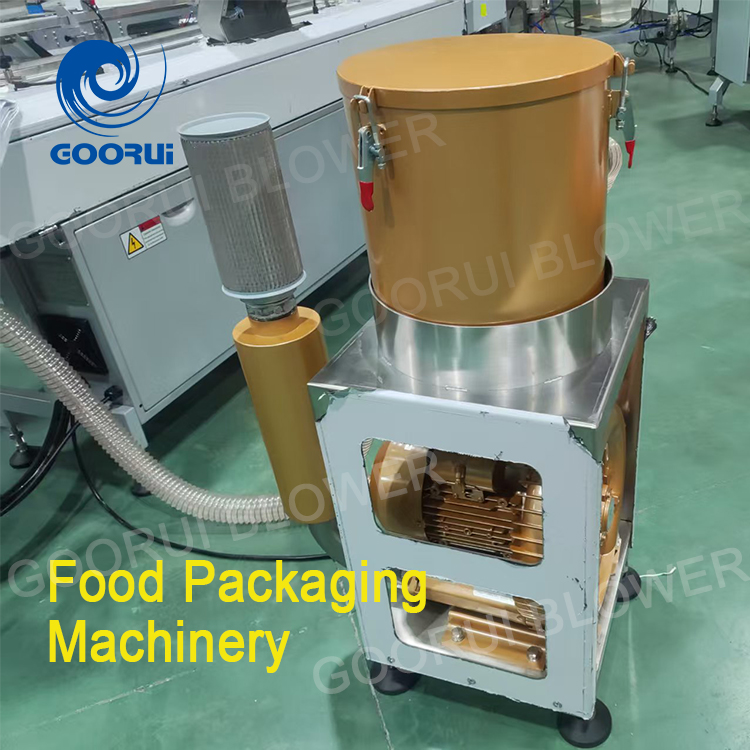With the characteristics of high pressure and strong airflow, high-pressure regenerative blowers play a key role in many “special industries” with strict requirements on environment, safety and hygiene. These industries often involve flammable and explosive, high cleanliness, strong corrosion, high risk and other scenarios, and have extremely high requirements for the stability, safety and adaptability of blowers. The following is a detailed description from the two aspects of special industry applications and core precautions:
Typical applications of high-pressure fans in special industries
1. Medical and biopharmaceutical industries
Medical and biopharmaceutical industries have strict requirements on environmental cleanliness, sterility and safety. High-pressure regenerative blowers are mainly used for “negative pressure control”, “sterile transportation” and “waste treatment”:
·Negative pressure isolation ward/laboratory: Indoor air is extracted by high-pressure regenerative blowers to maintain the negative pressure environment of the ward/laboratory (the air pressure is lower than the outside world) to prevent bacteria and viruses from spreading to the outside with the airflow. It is especially suitable for infectious disease hospitals and P3/P4 biosafety laboratories.
·Medical waste treatment: Use high-pressure airflow to quickly transport contaminated needles, dressings and other medical waste to a sealed treatment device to reduce the risk of manual contact; at the same time, use a fan to draw the waste gas generated during the treatment process into the disinfection system (such as ultraviolet and ozone disinfection) to avoid secondary contamination.
·Pharmaceutical material transportation: In the production of sterile preparations, high-pressure regenerative blowers can transport powdered raw materials (such as pharmaceutical excipients) through negative pressure or positive pressure, and the whole process is closed and contactless to avoid contamination of raw materials (food-grade/pharmaceutical-grade pipes and filters are required).
2. Food and agricultural and sideline products processing industry
The food industry has extremely high requirements for “sanitation and safety” and “no cross-contamination”. The application of high-pressure regenerative blowers must meet food-grade standards:
·Material transportation and sorting: Use high-pressure airflow (positive pressure) to blow grains, nuts, potato chips and other granular foods, or use negative pressure to absorb light foods (such as bread and biscuits) to achieve automated sorting and bagging to avoid contamination caused by manual contact (the part of the fan in contact with the material needs to be made of 304/316 stainless steel, with a smooth and easy-to-clean surface).
· Drying and dehydration: In the process of fruit and vegetable dehydration and meat air drying, high-pressure regenerative blowers can provide high-speed hot air flow (need to be equipped with a heating device) to quickly remove moisture from the surface of the material. At the same time, the wind pressure control ensures that the hot air evenly penetrates the material to improve the drying efficiency (such as instant noodle cake drying production line).
· Packaging vacuum: Some food packaging (such as vacuum-packed meat and sauces) requires high-pressure regenerative blowers to quickly extract the air in the package to form a vacuum environment and extend the shelf life (it is necessary to ensure that there is no oil mist at the exhaust end of the fan to avoid contaminating the food).
3. Chemical and hazardous chemicals industry
The chemical industry often involves corrosive, flammable, explosive, and toxic gases/materials. High-pressure regenerative blowers must meet the requirements of “corrosion resistance, explosion prevention, and leakage prevention”:
· Corrosive gas transportation: In acid and alkali production and electroplating waste liquid treatment, high-pressure regenerative blowers can transport corrosive gases such as chlorine and sulfur. At this time, the blower impeller and casing must be made of FRP (glass fiber reinforced plastic), PVC or rubber lining to avoid corrosion and leakage.
·Ventilation of flammable and explosive environments: In paint, solvent, and natural gas processing workshops, high-pressure regenerative blowers are used for forced ventilation to reduce the concentration of flammable and explosive gases (explosion-proof motors must be used, and the impellers must be grounded electrostatically to avoid sparks from friction).
·Reactor gas circulation: Some chemical reactions require gas circulation in a closed environment (such as catalytic reactions). High-pressure regenerative blowers can provide high-pressure airflow to ensure that the reaction gases are evenly mixed and fully contact the catalyst (the wind pressure stability must be strictly controlled to avoid reaction pressure fluctuations).
4. Environmental protection and waste treatment industry
High-pressure regenerative blowers are mainly used in the field of environmental protection for “pollutant collection, treatment and emission reduction” and need to adapt to environments with high dust, high humidity and odor:
·Waste incineration/landfill: The high-pressure regenerative blowers is used to pump the biogas (including methane) produced by garbage fermentation to the treatment device (such as torch combustion or power generation system) to avoid explosion caused by biogas leakage; at the same time, fresh air can be pressed into the landfill through positive pressure to accelerate the degradation of garbage.
·Waste gas (VOCs) treatment: In the treatment of VOCs in industries such as painting and printing, the high-pressure regenerative blowers pressurizes the waste gas and sends it into the adsorption tower (such as activated carbon adsorption) or catalytic combustion device to ensure that the waste gas fully reacts in the equipment (it needs to overcome the resistance of the treatment equipment, so it relies on the high-pressure characteristics).
·Dust recovery and dust removal: In dust control in mines and building materials processing, high-pressure regenerative blowers use negative pressure to draw workshop dust into bag dust collectors, and the separated clean air is discharged, and the dust is collected and recycled (a high-efficiency filter needs to be installed at the blower inlet to prevent dust from wearing the impeller).
5. Mining and underground engineering industry
Underground environments such as mines and tunnels need to solve the problems of “ventilation, dust removal, and gas prevention”. The high-pressure characteristics of regenerative blowers can overcome the resistance of long-distance pipelines:
·Underground ventilation: In coal mines and metal mines, high-pressure regenerative blowers press fresh air into the underground through pipelines, and at the same time extract dirty air containing gas and dust (explosion-proof regenerative blowers are required to avoid gas explosions when encountering sparks; wind pressure needs to be accurately calculated according to the depth of the well and the length of the pipeline to ensure sufficient air volume).
·Shield machine supporting: During tunnel shield construction, high-pressure regenerative blowers provide cooling air for the shield machine (cooling the cutter and motor), and at the same time, the soil and dust generated by the construction are pumped to the ground through negative pressure (dust wear resistance is required, and the impeller needs to be hardened).
6. New energy and electronics industry
New energy (such as lithium batteries, photovoltaics) and the electronics industry have extremely high requirements for “cleanliness, inert environment, and anti-oxidation”:
·Lithium battery production: During the battery cell injection and packaging process, it is necessary to operate in an inert gas (nitrogen) environment. High-pressure regenerative blowers are used for nitrogen circulation (maintaining air flow in closed spaces to avoid local oxygen residues causing battery cell oxidation). The blowers need to be oil-free (to avoid oil and gas contamination of the battery cell) and low leakage (to ensure nitrogen purity).
·Semiconductor/photovoltaic cleaning: After cleaning silicon wafers and chips, high-pressure regenerative blowers provide high-pressure clean air (filtered by HEPA) to quickly dry the surface moisture and avoid water stains that affect the accuracy (ultra-high cleanliness is required, there is no dead corner inside the blower, and it is easy to disinfect).
In short, the core logic of using high-pressure regenerative blowers in special industries is: “Adapting to scenario characteristics (medium, environment, precision) + strengthening safety and compliance + ensuring stability and cleanliness“. Targeted selection and operation and maintenance must be carried out in combination with the risk points of specific industries (such as corrosion, explosion, and pollution).



